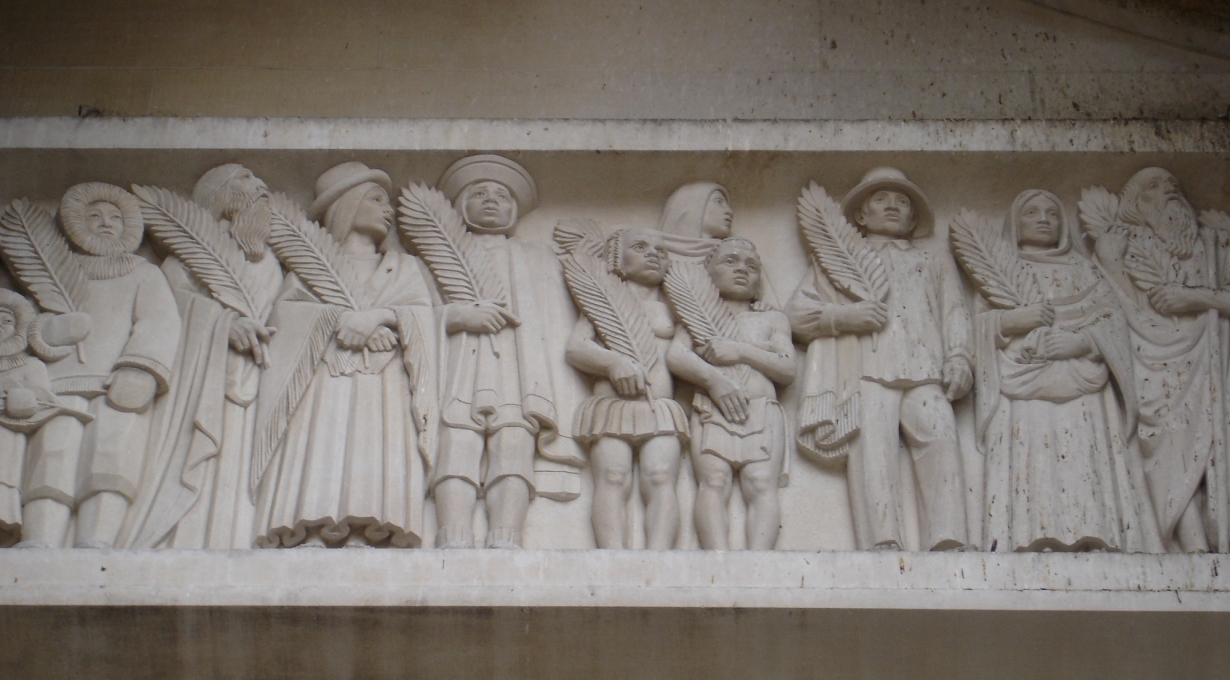The Frieze on the Western Facade

In this series, members of the Cathedral community reflect on some of the most meaningful events or parts of the Cathedral.
Often when I begin a tour, I ask people: “When you were outside, what was your first impression of the building?” Your first experience of any building of any faith is the façade, the face of the building. So, I ask people when looking at the building from the outside, “What does it say to you?”
Most people are struck by the size of the building. For over 125 years, this monumental building has welcomed and wowed people from all over the world who come here for worship services held over 30 times a week. People also come for our many concerts, exhibitions, performances and civic gatherings; a cathedral has many uses.
The guiding force behind this has been our mission statement, which states, in part, that St. John the Divine is:
“Chartered as a house of prayer for all people and a unifying center of intellectual light and leadership. It serves the many diverse people of our Diocese, City, Nation and World through an array of liturgical, cultural and civic events; pastoral, educational and community outreach activities.”
The welcome begins outside on that western façade and the frieze over the bronze doors. I wonder how many visitors ever notice the frieze, and, if they do, do they know what it means? Installed in the 1960’s, the frieze is a horizontal row of stone people, carved to represent the many nations of the world. This frieze depicts people from different cultures and backgrounds holding palm leaves, a reference to the Revelation of St. John for whom the Cathedral is named. Our mission tells us the Cathedral services diverse people from our diocese, city, nation and the world, and the world is depicted in the frieze.
That world began to arrive in earnest in New York City in 1892 when Ellis Island first opened for business, the same year the Cathedral began construction. The message of welcome present in the frieze on the western front is directly connected to the Chapels of the Tongues in the far eastern end of the Cathedral. Each chapel represents a different country from which major waves of immigrants came at the turn of the 20th century. From one end of the Cathedral to the other, this great building lives up to its mission to welcome people from the many nations of the world.
It’s important to note that the frieze is placed just above the bronze doors. Right before you enter the Cathedral, you might look up and notice carvings of people wearing the traditional attire of your homeland and feel a sense of welcome. Visitors may not know our mission statement before they enter the building, but walking through this visual representation of welcome carved into the stonework is how you are meant to enter the Cathedral.
The frieze also serves as a reminder that our mission of welcome has been with us for years past and will continue for years in the future. Come what may, the Cathedral will always find a way to be there for the community and the world.
And what about those palm leaves? Palms symbolize not just tropical vacations but also triumph, victory, peace and plenty. What better way is there to welcome people to the Cathedral then with peace for all!